A BEGINNER’S GUIDE TO TONGUE SCRAPING (YOU’LL LOVE OUR PRO TIP!)
Decoding the mystery behind tongue scraping
Jihwa Prakshalana is the Ayurvedic self-care ritual of tongue scraping and is a gentle practice to cleanse the tongue. One of the simple daily rituals recommended for general health and wellbeing, tongue scraping – also known as tongue cleaning – is a complementary practice to oil pulling, brushing and flossing. A long, thin piece of metal or plastic, tongue scrapers are rounded into a “U” shape and remove bacteria, food debris, fungi, toxins and dead cells from the surface of the tongue which protects the digestive system, supports dental health, and enhances the sensation of taste.
Ayurveda considers the tongue as an indicator of gut imbalances or digestive problems, and having a white coating on the tongue signals the presence of Ama (digestive toxins) inside the body. Ama, which means “unripe or undigested”, is characterised by a coated white tongue, bad breath, and a potent body odour. Tongue scraping helps remove Ama (and all that other gunk!) from the tongue.
The palate-pleasing history of tongue cleansing
The age-old proverb of “If the eyes are a window to the soul, then the mouth is the doorway to the body” reflects the importance of good oral health. Tongue scraping is an ancient art, practiced for ages in South America, India, Africa, Arabia and Europe. In fact, archaeological discoveries have shown that ancient civilisations used tools to clean their tongue starting more than 7,000 years ago!
In African, Arabic and Asian cultures, a teeth cleaning stick called a “miswak” was commonly used in oral hygiene practices. Early accounts of tongue cleaning also mention the use of “datun”, an Indian toothbrush constructed as an oral hygiene tool from a twig from a fragrant tree. The practice of tongue scraping has persisted in Ayurvedic medicine as it is believed that tongue scraping helps remove toxins from the body and mind and that incorporating tongue scraping into one’s daily routine can lead to a sense of clarity and improved mental focus. In the fifteenth century, tongue scraping became prevalent in European cultures and various types of tongue scrapers were created. The twentieth century has seen the scientific community investigating the effectiveness of tongue scraping and why it should be included in every day oral hygiene practice [1, 2].
Tongues, tastebuds, and the magnificent microbiome of the mouth
One of the body’s strongest and most flexible muscles, the tongue is actually made up of eight different muscles and is 10 centimetres long on average! The tongue is an organ that has many features, and is not limited to just eating, tasting, distinguishing tastes, and talking to people. The adult human tongue has anywhere from 2,000 to 10,000 tastebuds, and recent literature suggests a connection between oral microbiota health and taste sensitivity. In fact, everyone’s tongue imprint is unique like a fingerprint, and changes in the colour and shape of your tongue can be important messengers of health, too.
Did you know that more than 700 species of bacteria are found in the oral cavity and on the tongue? It’s a mini microbial galaxy! The oral cavity has the second largest and diverse microbiota after the gut [3]! The oral microbiome nurtures numerous microorganisms which include bacteria, fungi, viruses and protozoa – most of them are good bacteria. However, there are also bad ones, too. Some foods and drinks, smoking or vaping, and many other things we consume during the day can increase these bad bacteria. You may be starting to realise that it is important to clean our tongue!
The benefits of tongue scraping
The Ayurvedic tradition believes that digestion and health begin with taste. Using a tongue scraper can remove the build-up on the tongue and stimulates the salivary glands, which support a smooth digestive process and good gut health. The benefits of tongue scraping are many:
- Removes bacteria, plaque and toxins on the tongue
- Maintains good oral hygiene and supports fresh breath
- Improved sense of taste
- Induces salivary secretions, aids in digestion, supports good gut health
- Supports the immune system (the tongue epithelium is a defense barrier against allergens, immunogens and pathogens)
- Part of Ayurvedic self-care and a great way to check in with your body each morning
Copper, the tongue-tastic metal!
Copper (Cu) is one of the first metals ever extracted and used by humans and is a versatile and recyclable material. It is also an essential element for human nutrition – the mineral is critical for blood cell formation and is found in many foods and most water supplies. Foods high in copper include leafy greens, beans and potatoes.
Using a tongue scraper made from copper is considered one of the best choices for cleaning your tongue. Following traditional Ayurvedic practices, our tongue scrapers are crafted out of 100% high grade, solid copper, as this reddish coloured metal has natural antimicrobial and antibacterial properties. Toxic to the bad bacteria in your mouth, copper also provides vital enzymes that promote the survival of good bacteria and other important microbes in the oral cavity – this makes it the ultimate material for tongue cleaning! Copper tongue scrapers have a great shelf life and can last for many years if you care for them properly. Plus, continuous exposure to water and moisture will not affect its life or performance, and cleaning and maintenance is easy.
Tongue scraping how-to guide (plus Pro tip!)
Ideally, use your tongue scraper every day after brushing your teeth. Kiran Krishnan, research Microbiologist and Gutsi® formulator, advocates tongue scraping after breakfast – not when you first wake up, like is often recommended. Here’s why: one of the most important things that occurs overnight in the oral microbiome is the development of a significant number of microbes in our mouth (this is why we have awful ‘morning breath’). However, these microbes are the ones that create and provide nitric oxide (NO), which regulates blood pressure, transmits signals between neurons, and suppresses pathogens. The oral microbiome is the primary source of these NO producers, so if you scrape these off when you first wake up, you negate all the important effects of the NO that has been produced overnight. For the best NO production, Kiran recommends we wake up, hang out, workout, have our tea or coffee, eat, and then brush our teeth and tongue scrape!
Step 1: Stick your tongue out of your mouth and place the centre of the scraper at the back of the tongue. Hold by the looped handles.
Step 2: Firmly and gently, mindfully scrape the surface of your tongue in one long stroke, from back to front.
Step 3: Rinse the scraper under water.
Step 4: Repeat this process 3-5 times for complete removal of coating.
Step 5: Rinse your tongue scraper with warm water and let it dry.
6 ways to keep your oral microbiome healthy
- Clean your tongue every day: use the Gutsi® copper tongue scraper to clean your tongue and floss and brush your teeth every day, twice a day.
- Stay hydrated: adequate hydration supports saliva production, which helps maintain a balanced oral microbiome. Did you know that a dry mouth and bad breath are two signs of dehydration?
- Eat a balanced diet: avoid foods high in sugar or acid which can harm your tongue and oral health. Because our mouths and stomachs are connected by the gastrointestinal tract (GIT), many of the bacteria we need in our stomach actually come from our mouths!
- Avoid smoking and vaping: smoking can lead to a range of oral microbiome issues, including but not limited to gum disease, and early research indicates that when it comes to oral health vaping is just as harmful as traditional cigarettes.
- Regular check-ups: visit your dentist regularly, don’t wait for pain or bleeding to make an appointment to see your health practitioner.
- Take a spore-based probiotic daily: food malabsorption is a primary contributor to bad breath and impaired digestion can lead to odorous burps and occasional foul breath. Nourish your gut daily with SporeBiotic™ or if you feel like you need a little extra microbiome support, try the Gut Reset Kit.
References
- Singh A, Purohit B. Tooth brushing, oil pulling and tissue regeneration: A review of holistic approaches to oral health. J Ayurveda Integr Med. 2011 Apr;2(2):64-8. doi: 10.4103/0975-9476.82525.
- Christen AG, Swanson BZ. Oral hygiene: a history of tongue scraping and brushing. J Am Dent Assoc 1978;96:215–9. https://doi.org/10.1016/s0002-8177(16)30453-6.
- Deo PN, Deshmukh R. Oral microbiome: Unveiling the fundamentals. J Oral Maxillofac Pathol. 2019 Jan-Apr;23(1):122-128. doi: 10.4103/jomfp.JOMFP_304_18.





